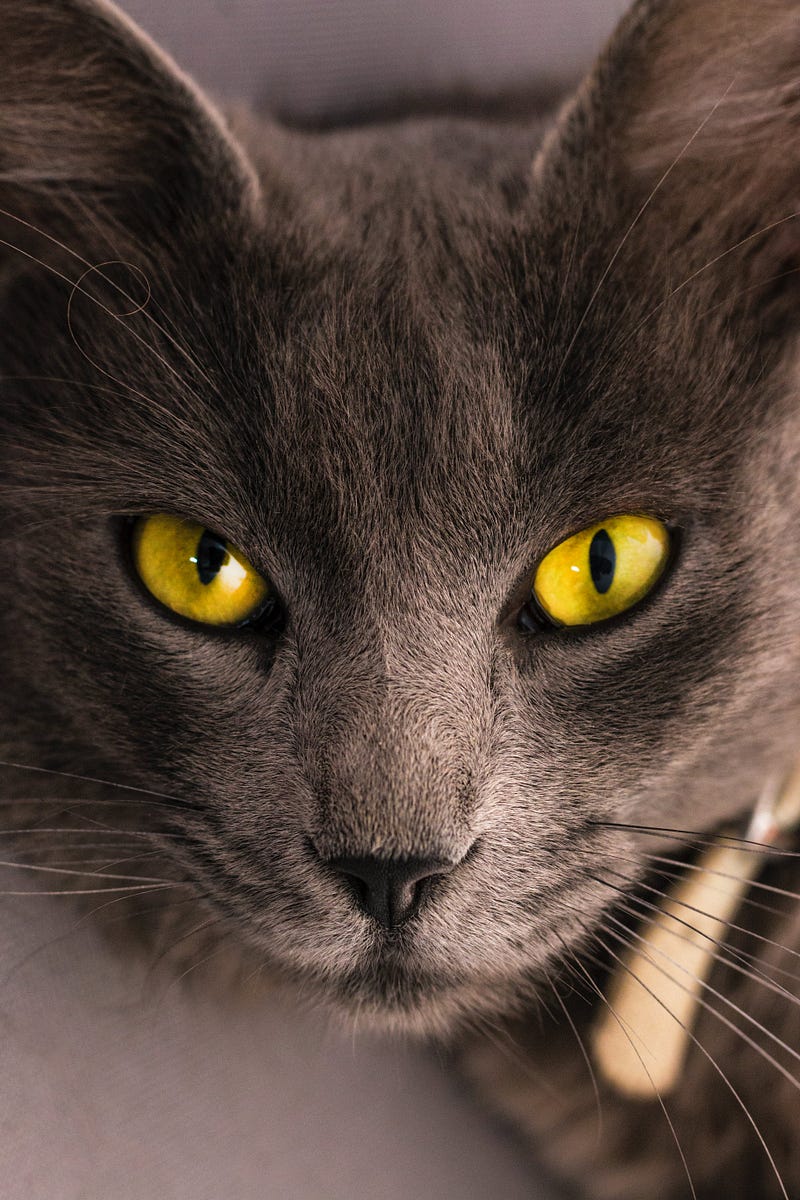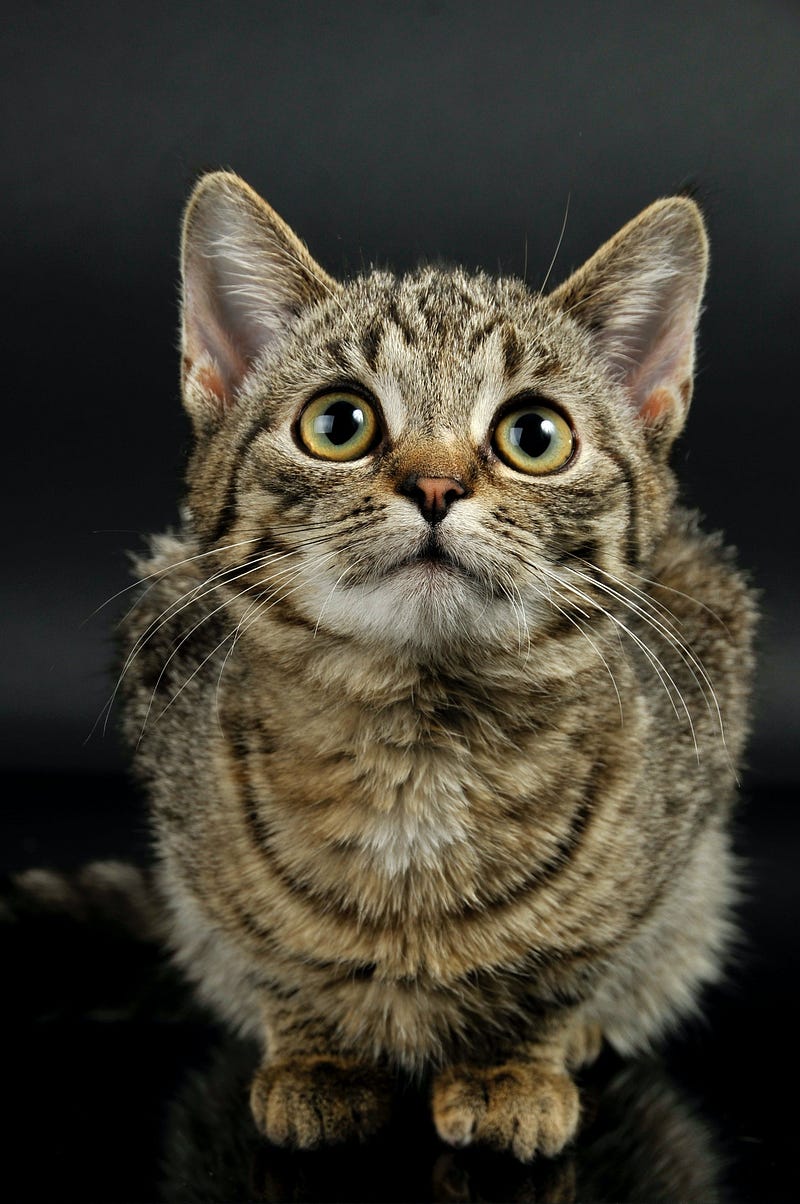Discovering the Diversity of Cat Eye Colors: A Scientific Journey
Written on
Chapter 1: Introduction to Cat Eye Colors
Cats possess truly remarkable eyes. In the realm of animals, they are distinguished not only for their nocturnal vision but also for the wide array of eye colors they exhibit. This diversity wasn't always apparent.

Cats, along with dogs, rank among the most beloved pets worldwide. Yet, their presence extends beyond domestic life; they belong to a larger family of predatory mammals known as felines. Various species differ in size, habitat, and geographical distribution, currently roaming freely across Europe, Asia, the Americas, and Africa.
What Eye Colors Do Cats Have?
The way cats perceive their surroundings is one of the most captivating features of these creatures. Felines, such as domestic cats and wild relatives, possess an enhanced ability to see in low light due to a higher concentration of rod cells in their retinas. These light-sensitive cells are crucial for detecting shapes and movements. Interestingly, cats require only one-sixth the amount of light that humans need, allowing them to thrive in twilight conditions.
Let’s delve deeper into the fascinating world of cat eyes. Researchers are intrigued not only by their functionality but also by their appearance and the reasons behind their striking variety. Recent studies have illuminated the evolutionary history of cat eye colors. By tracing the lineage, scientists have discovered that a single ancestor contributed significantly to the spectrum we see today. Through analyzing eye colors in various living cat species, they utilized a computer model to track the evolution of these hues within their family tree. The findings revealed that the ancestors of all cats likely had either gray or brown eyes.
The closest living relatives of cats also share brown eyes, indicating a common ancestral trait. So, what accounts for the current diversity in cat eye colors? A significant change occurred within the Felidae family millions of years ago.

Were Cat Eyes Always So Diverse?
In their research, scientists combined eye color data from over 40 cat species with previously established evolutionary relationships among living and extinct species. They found that the most prevalent eye colors in cats today (excluding selectively bred domestic cats) include brown, gray, yellow, green, and blue. The presence of two pigments, eumelanin and pheomelanin, plays a critical role in determining a cat's eye color.
The findings indicated that brown eyes contain a higher concentration of eumelanin, while yellow eyes are characterized by a greater presence of pheomelanin. Gray eyes, on the other hand, contain moderate levels of both pigments, insufficient to create other colors. Blue and green eyes have lower amounts of both. According to researchers, gray eyes emerged due to a random mutation in the ancestral lineage of cats, which involved a reduction in eumelanin levels. The reasons behind the emergence of other colors remain a mystery, with no observed links between eye color and other physical traits, behaviors, or habitats that could elucidate this colorful variation.

New Insights into Cat Eye Color Diversity
The study's lead author, Julius Tabin, a graduate student and doctoral candidate at Harvard University, has shared his findings in a preprint database, awaiting peer review. Nevertheless, the academic community has received these results with enthusiasm, marking the first comprehensive analysis of eye color diversity in cats and igniting discussions among scientists. More experts not directly involved in the study are beginning to share their perspectives.
For instance, Shu-Jin Luo, an evolutionary geneticist at Peking University, proposes that the variation in cat eye color may be a secondary effect of fur color selection. Conversely, Rosalyn Price-Waldman, an evolutionary biologist and doctoral candidate at Princeton University, attributes it to random genetic mutations. It's fascinating to consider that a single ancestor could be the source of such rich and vibrant diversity.
Chapter 2: The Rarest Eye Colors in Cats
This video explores some of the rarest eye colors found in cats, examining what makes each unique and how these colors can signify genetic factors.
Chapter 3: The Journey of Cat Eye Color Research
In this video, the creator shares their experience in developing images of cat eyes, discussing the complexities and challenges faced in capturing these stunning features.
Dear Readers,
As a content creator on Medium.com, I wish to highlight the challenges we often face regarding fair compensation for our efforts. Despite investing significant time and energy into crafting valuable articles, the rewards can be minimal. If you enjoy my work, please consider supporting my efforts through my "Buy Me a Coffee" page. Your contributions, no matter how small, encourage me to keep producing insightful and engaging content. Thank you for your support!
